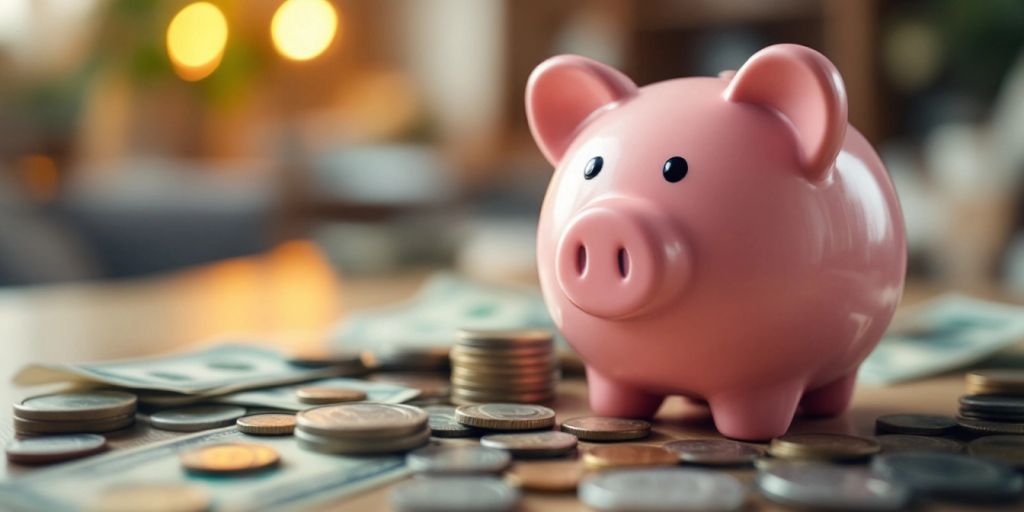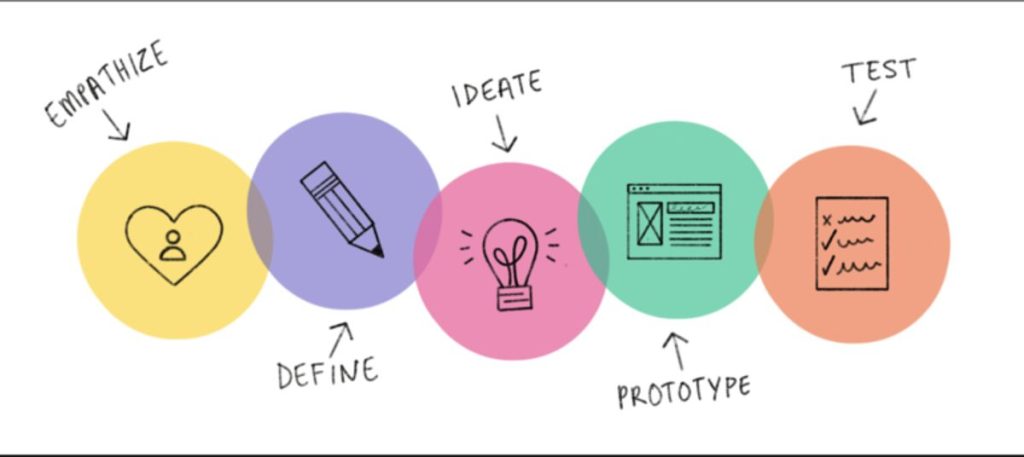Building an emergency fund is essential for everyone. It helps you manage unexpected costs without going into debt. This guide will walk you through the importance of having an emergency fund, how to create one, and tips to keep it growing. By following these steps, you can achieve financial security and peace of mind.
Key Takeaways
- An emergency fund is crucial for covering unexpected costs without financial strain.
- Set a realistic savings goal based on your monthly expenses.
- Choose a suitable account for your emergency fund, like a high-yield savings account.
- Automate your savings to ensure regular contributions and track your progress easily.
- Use your emergency fund only for genuine emergencies and plan to replenish it after use.
Understanding the Importance of an Emergency Fund
Why Everyone Needs One
Having an emergency fund is super important for everyone. It acts like a safety net, helping you deal with unexpected costs like car repairs or medical bills. Without it, you might have to rely on credit cards, which can lead to more debt. Here are some reasons why you need one:
- Prepares you for surprises: Life can throw curveballs, and having savings means you’re ready for anything.
- Protects you from debt: Instead of borrowing money, you can pay for emergencies in cash.
- Gives you peace of mind: Knowing you have money set aside helps reduce stress about finances.
Common Misconceptions About Emergency Funds
Many people think they don’t need an emergency fund because they have credit cards. But using credit can lead to high-interest debt. Others believe they can’t save because they live paycheck to paycheck. The truth is, starting small—even saving a few dollars a week—can make a big difference over time.
The Peace of Mind an Emergency Fund Brings
Having an emergency fund not only helps you handle financial surprises but also boosts your mental well-being. It reduces stress and increases your confidence in managing your finances.
An emergency fund is not just about money; it’s about feeling secure and ready for whatever life throws your way.
Setting Realistic Savings Goals
Determining Your Savings Target
To figure out how much you need to save, start by looking at your monthly expenses. A good rule of thumb is to save enough to cover three to six months of living costs. For example, if you spend $2,000 a month, aim for an emergency fund of $6,000 to $12,000. This gives you a solid safety net for unexpected expenses.
Breaking Down Your Goals into Manageable Steps
Once you have a target, break it down into smaller, achievable steps. Here’s how:
- Set a monthly savings goal. If your target is $6,000, save $500 each month.
- Start small. If $500 feels too much, begin with $100 or even $50.
- Track your progress. Use a simple chart or app to see how close you are to your goal.
Adjusting Goals as Your Financial Situation Changes
Life happens, and your financial situation may change. Here’s how to stay flexible:
- Review your budget regularly. Check if you can save more or need to adjust your goals.
- Celebrate small wins. When you reach a milestone, reward yourself to stay motivated.
- Don’t be too hard on yourself. If you need to lower your goal, that’s okay! The important thing is to keep saving.
Remember, saving is a journey, not a race. Every little bit counts, and staying consistent will help you build that emergency fund over time.
Choosing the Right Account for Your Emergency Fund
When it comes to saving for emergencies, picking the right account is super important. You want a place where your money can grow but is still easy to access when you need it. Here are some great options to consider:
High-Yield Savings Accounts
High-yield savings accounts are a fantastic choice because they offer better interest rates than regular savings accounts. This means your money can grow faster! Plus, these accounts are easy to access, so you can get your cash quickly in an emergency.
Money Market Accounts
Money market accounts are another solid option. They usually offer higher interest rates than traditional savings accounts and come with check-writing privileges. This makes them a flexible choice for your emergency fund.
Traditional Savings Accounts
If you prefer something simple, a traditional savings account can work too. While the interest rates might not be as high, these accounts are very straightforward and still provide easy access to your funds.
Remember, the goal is to keep your emergency fund safe and accessible. You want to be able to pay that doctor or mechanic quickly without any hassle.
Key Takeaways
- Choose an account that offers good interest rates.
- Make sure the account is easy to access.
- Avoid accounts with high fees that can eat into your savings.
By selecting the right account for your emergency fund, you can ensure that your savings are working for you while still being available when you need them. Aim to save enough to cover three to six months' worth of essential expenses so you can handle unexpected costs without stress!
Automating Your Savings
Setting Up Automatic Transfers
One of the easiest ways to save money is to automate your savings. By setting up automatic transfers from your checking account to your savings account, you can make saving a breeze. Just decide how much you want to save each month and let the bank do the work for you!
Using Apps to Track Your Savings
There are many apps available that can help you track your savings. These apps can remind you to save and show you how much you’ve saved over time. This way, you can stay motivated and see your progress. Here are a few popular options:
- Mint: Helps you budget and track your savings.
- Qapital: Allows you to set savings goals and automate transfers.
- Digit: Analyzes your spending and saves small amounts for you.
The Benefits of Consistent Contributions
When you automate your savings, you’re more likely to stick to your goals. Consistent contributions can help you build your emergency fund faster. Even small amounts add up over time. For example, if you save just $10 a week, you’ll have $520 by the end of the year!
Automating your savings is like putting your financial future on autopilot. You won’t have to think about it, and your savings will grow without you even noticing!
By automating your savings, you can take control of your finances and ensure you’re prepared for unexpected expenses. Remember, it’s all about making saving easy and stress-free!
Strategies to Boost Your Savings
Cutting Unnecessary Expenses
One of the easiest ways to boost your savings is by cutting unnecessary expenses. Start by reviewing your monthly budget and identifying areas where you can trim costs. Here are some ideas:
- Cancel subscriptions you rarely use.
- Eat out less often.
- Look for cheaper alternatives for your regular purchases.
Every little bit adds up!
Finding Additional Income Streams
If cutting expenses isn't enough, consider finding additional income streams. This could be a part-time job, freelance work, or even selling items you no longer need. Here are some options:
- Become a rideshare driver.
- Take paid surveys online.
- Sell gently used clothes or items.
Exploring new opportunities can be fun and rewarding!
Using Windfalls Wisely
Whenever you receive unexpected money, like a tax refund or a bonus, resist the urge to splurge. Instead, use these windfalls to boost your emergency savings. By doing so, you can make significant progress without affecting your regular budget. Remember, having savings can get you out of many financial scrapes.
Building your emergency fund doesn't have to be a daunting task. By making small, consistent efforts, you can achieve your savings goals and enjoy greater financial stability.
Automating Your Savings
One of the best ways to ensure you save regularly is to automate the process. Set up automatic transfers from your checking account to your savings account. This way, you won't even have to think about it, and your savings will grow effortlessly.
Tracking Your Progress
Keep an eye on your savings to stay motivated. Use a simple spreadsheet or a budgeting app to track how much you've saved. Seeing your progress can be a great motivator to keep going. You might even want to set milestones and reward yourself when you reach them.
By implementing these strategies, you can effectively boost your savings and build a solid emergency fund for those unexpected expenses!
When to Use Your Emergency Fund
Your emergency fund is there for, well, emergencies! But how do you know when it's the right time to dip into it? Here are some guidelines to help you decide.
Identifying True Emergencies
A true emergency is an unexpected event that requires immediate attention and can't be postponed. Think of things like a sudden medical expense, urgent car repairs, or an unexpected job loss. If it's not an emergency, you should view the money as not accessible. This way, you ensure that your fund is available when you really need it.
Avoiding Non-Essential Withdrawals
It's tempting to use your emergency fund for non-essential expenses like a vacation or a new gadget. However, doing so defeats the purpose of having the fund in the first place. Remember, once that money is spent, it always takes much longer than anticipated to replace it. Keep your emergency fund for true emergencies only, and you'll be better prepared to handle life's unexpected challenges.
Replenishing Your Emergency Fund After Use
After using your emergency fund, it's crucial to start rebuilding it as soon as possible. Begin by setting a clear plan to replenish the amount you've used. This might mean cutting back on non-essential expenses or finding ways to increase your income temporarily. The goal is to get your fund back to its original state so you're prepared for the next unexpected event.
An emergency fund turns a financial crisis into an inconvenience.
Here are three questions to ask yourself before using your emergency fund:
- Is it unexpected?
- Is it necessary?
- Is it urgent?
If the answer is yes to all three, you’ve got a real emergency—and a real need to use your emergency fund. If not, then it can wait. (Spoiler alert: Christmas gifts are not an emergency.)
Rebuilding Your Emergency Fund
After using your emergency fund, it’s time to get back on track! Here’s how to do it:
Setting a Rebuilding Plan
Start by creating a clear plan to replenish your emergency fund. This might mean cutting back on non-essential expenses or finding ways to increase your income temporarily. The goal is to get your fund back to its original state so you're prepared for the next unexpected event.
Adjusting Your Budget
Take a close look at your budget after using your emergency fund. You may need to adjust your spending to free up more money for savings. This could involve:
- Reducing discretionary spending
- Finding cost-effective alternatives for regular expenses
- Setting aside a specific amount each month to rebuild your fund
Tracking Your Progress
Keep track of your progress as you work to replenish your emergency fund. This can help you stay motivated and see how far you've come. Consider setting smaller milestones along the way to make the process feel more manageable. Celebrate each milestone to keep your spirits high and maintain your commitment to rebuilding your fund.
Remember, rebuilding your emergency fund might seem daunting, but with a solid plan and some budget adjustments, you'll be back on track in no time!
Avoiding Common Pitfalls
When it comes to building your emergency fund, there are some common mistakes you want to avoid. Here’s how to steer clear of them:
Over-Saving vs. Under-Saving
Finding the right balance is key. Saving too much can mean missing out on other important financial opportunities, while not saving enough can leave you vulnerable during tough times. Aim for a sweet spot that covers your needs without overdoing it.
Keeping Funds Accessible
Your emergency fund should be separate from your everyday spending money. This way, you won’t be tempted to dip into it for non-emergencies. Consider using a high-yield savings account to keep your funds safe and accessible when you truly need them.
Balancing Savings with Investments
It’s important to invest for the future, but don’t forget about your emergency fund. Having a solid safety net can prevent you from going into debt when unexpected expenses arise. Make sure you’re saving enough to cover at least three to six months of living expenses.
Remember, building your emergency fund is a journey. Stay patient and consistent, and you’ll reach your goals!
By avoiding these pitfalls, you can ensure that your emergency fund is effective and ready for any unexpected expenses that come your way. Happy saving!
Celebrating Your Financial Milestones
Recognizing Achievements
Celebrating your financial milestones is super important! Every step you take towards your goals counts. Whether you’ve saved your first $100 or reached a bigger target, take a moment to appreciate your hard work. Here are some ways to recognize your achievements:
- Share your success with friends or family.
- Keep a journal of your financial journey.
- Create a visual chart to track your progress.
Rewarding Yourself
Once you hit a milestone, it’s time to reward yourself! Treating yourself can keep you motivated. Here are some fun ideas:
- Enjoy a nice dinner out.
- Buy that book you’ve been wanting.
- Plan a small getaway.
Reflecting on Your Journey
Take time to think about how far you’ve come. Reflecting on your journey helps you understand what worked and what didn’t. This can guide you in setting future goals. Remember, every financial milestone is a step towards financial freedom.
Celebrating your achievements not only boosts your confidence but also keeps you focused on your financial goals.
Tips for Staying on Track with Your Financial Goals
- Regularly review your goals to see how you’re doing.
- Adjust your plans if needed, especially after big life changes.
- Keep your milestones visible to remind yourself of your progress.
By celebrating your financial milestones, you build momentum that can carry you through tougher times. Remember, every little victory counts!
Planning for the Future
Budgeting for Success
Creating a budget is the first step to financial freedom. It helps you see where your money goes and where you can save. Start by listing all your income and expenses. This will help you find areas to cut back and save more.
- Track your spending daily.
- Adjust your budget as needed.
- Use budgeting tools or apps to simplify the process.
Building an Emergency Fund
An emergency fund is money set aside for unexpected expenses, like car repairs or medical bills. Aim to save at least three to six months' worth of living expenses in your emergency fund. This fund will give you peace of mind and keep you from going into debt when unexpected costs arise.
Planning for Major Expenses
Think about big expenses you might have in the future, like buying a house or going to college. Plan for these by setting aside money each month. Break down the total cost into smaller, manageable amounts. This way, you can save up over time without feeling overwhelmed.
A good financial plan is flexible. Life changes, and so should your plan. Be ready to adjust your budget and savings as needed.
Wrapping It Up: Your Path to Financial Peace
Creating an emergency fund might feel like a big task, but it’s totally within your reach! Start with small amounts, and remember, every little bit counts. By setting clear goals and sticking to them, you’ll be ready for whatever surprises life throws your way. It’s all about taking that first step and staying focused. So why not start today? You’ll feel so much better knowing you’re prepared for any bumps in the road. Happy saving!
Frequently Asked Questions
What is an emergency fund?
An emergency fund is money set aside for unexpected costs, like car repairs or medical bills. It's like a safety net for your finances.
How much should I have in my emergency fund?
You should aim to save enough to cover three to six months of your living expenses. This way, you can handle tough times without stress.
Where is the best place to keep my emergency fund?
It's best to keep your emergency fund in a high-yield savings account. This way, your money can grow while still being easy to access.
How can I start building my emergency fund?
Start small by saving a little bit each month. You can increase the amount as you get more comfortable with saving.
Should I pay off debt or build my emergency fund first?
It's smart to have a small emergency fund of about $1,000 first. Then, focus on paying off high-interest debt before building a larger fund.
When should I use my emergency fund?
Use your emergency fund for real emergencies, like unexpected medical bills or urgent car repairs. Avoid using it for planned expenses.
How can I replenish my emergency fund after using it?
After using your emergency fund, make a plan to refill it. You can cut back on some spending or save extra money until it's back to where it was.
What are some common mistakes to avoid with my emergency fund?
Avoid using your emergency fund for non-emergencies, saving too much and missing out on investments, or not keeping the fund accessible.




